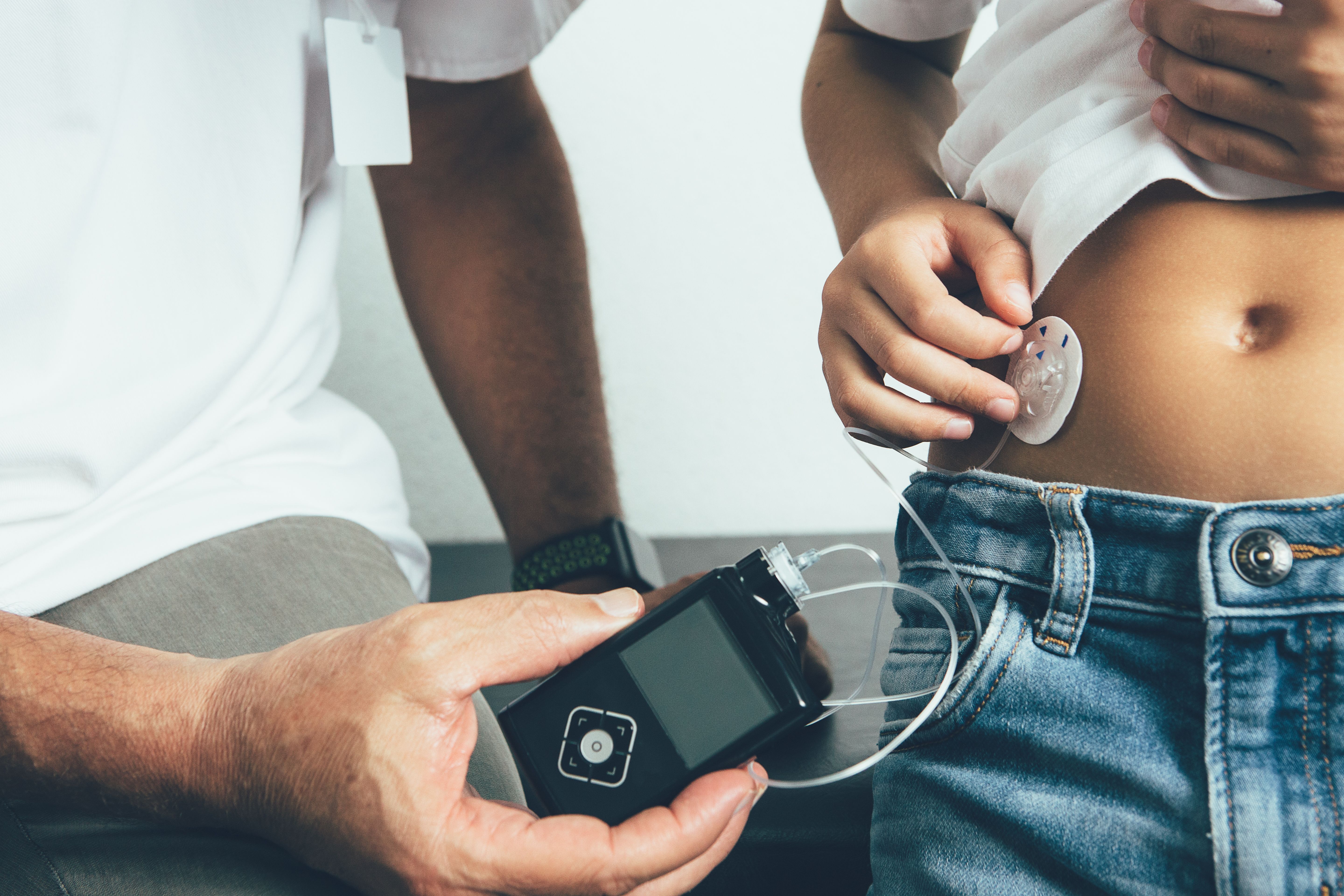- Clinical Technology
- Adult Immunization
- Hepatology
- Pediatric Immunization
- Screening
- Psychiatry
- Allergy
- Women's Health
- Cardiology
- Pediatrics
- Dermatology
- Endocrinology
- Pain Management
- Gastroenterology
- Infectious Disease
- Obesity Medicine
- Rheumatology
- Nephrology
- Neurology
- Pulmonology
Artificial Pancreas Improves Time in Range for Young Children with Type 1 Diabetes, According to New Study
Young children using a hybrid closed-loop insulin delivery system spent 12% more time within their target blood glucose range than those who received standard care, according to new research.

Data from a 13-week randomized controlled trial showed that young children using a hybrid closed-loop insulin delivery system spent 12% more time—approximately 3 hours per day—within their target blood glucose range compared to those who received standard care.
Findings come from the Pediatric Artificial Pancreas (PEDAP) Trial and were published online March 16, 2023, in the New England Journal of Medicine.
The benefit with regards to increased time in the target range was seen across various patient characteristics, including age, baseline HbA1c level, and insulin delivery method (insulin pump or insulin injections).
Investigators enrolled 102 children aged 2 to 5 years with type 1 diabetes who were prescribed insulin for at least 6 months prior to the trial, weighed at least 20 lb., and received a total daily insulin dose of at least 5 units. Of the cohort, 68 were randomly assigned to the hybrid closed-loop insulin delivery system with continuous glucose monitor (CGM), and 34 were assigned to standard care with a CGM for 13 weeks. Both groups had virtual or in-person visits at 2, 6, and 13 weeks, and telephone contacts were made at 1 and 10 weeks. Also, HbA1c was measured at randomization and 13 weeks.
The primary outcome was the percentage of time that the glucose level was in the target range of 70-80 mg/dL over the 13-week trial period. Secondary outcomes included the percentage of time that the glucose level was above 250 mg/dL or below 70 mg/dL, the mean glucose level, and HbA1c level. Safety outcomes included the incidence of severe hypoglycemia, diabetic ketoacidosis, and other serious adverse events.
Findings
At baseline, HbA1c levels ranged from 5.2%-11.5%, and initiation of the closed-loop system was virtual in 55 patients (81%).
The mean percentage of time that the glucose level was within the target range increased from 56.7% at baseline to 69.3% during the 13-week follow-up period in the closed-loop group and from 54.9% to 55.9% in the standard-care group (mean adjusted difference, 12.4% percentage points, 95% CI, 9.5-15.3; P<.001).
Participants in the closed-loop group had a lower time above range (mean difference, –5.4 percentage points, 95% CI, –7.3 to –3.6; P<.001), lower mean glucose level (mean difference, –17.7 mg/dL, 95% CI, –23.2 to –12.2; P<.001), and lower HbA1c (mean difference, –0.42 percentage points, 95% CI, –0.62 to –0.22; P<.001) than the standard care group. Percentage of time below range did not differ between the 2 groups, according to investigators.
The research team observed the greatest difference in glucose levels at nighttime, between 10 pm and 6 am, with participants in the closed-loop group spending 18% more time in range than those in the standard care arm.
“An increase in the mean time in range was observed within 1 day after the initiation of the closed-loop system, regardless of pretrial use of a pump or injections for insulin delivery, and this increase was observed during both daytime and nighttime,” wrote researchers.
Adverse events were reported by a higher percentage of children in the closed-loop group compared with those in the standard care group (60% vs 32%; P=.001). There were 2 cases of severe hypoglycemia in the closed-loop group and 1 in the standard care group. One episode of diabetic ketoacidosis occurred in the closed-loop group that was related to an infusion set failure.
Researchers noted that due to COVID-19 pandemic-related restrictions at the time of the study, more than 80% of the training in the use of the closed-loop system and over 90% of all visits were conducted virtually.
“Successful use of the closed-loop system under these conditions is an important finding that could affect the approach to initiating and monitoring the use of the closed-loop system and expand the use of such systems, particularly in patients living in areas without an endocrinologist but with reliable Internet access,” wrote study authors.
Reference: Wadwa RP, Reed ZW, Buckingham BA, et al. Trial of hybrid closed-loop control in young children with type 1 diabetes. N Engl J Med. 2023;388:991-1001.
Obesity Linked to Faster Alzheimer Disease Progression in Longitudinal Blood Biomarker Analysis
December 2nd 2025Biomarker trajectories over 5 years in study participants with AD show steeper rises in pTau217, NfL, and amyloid burden among those with obesity, highlighting risk factor relevance.
